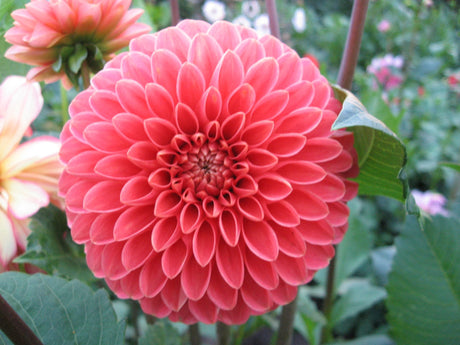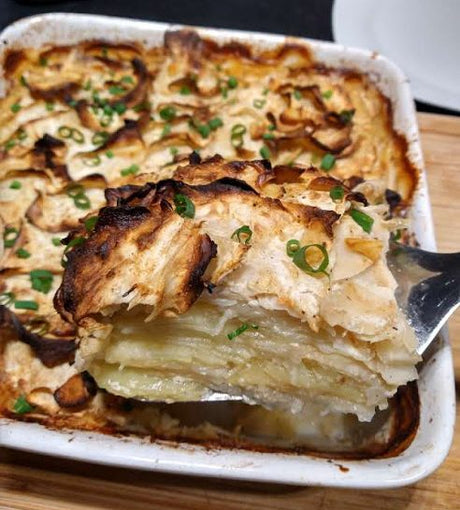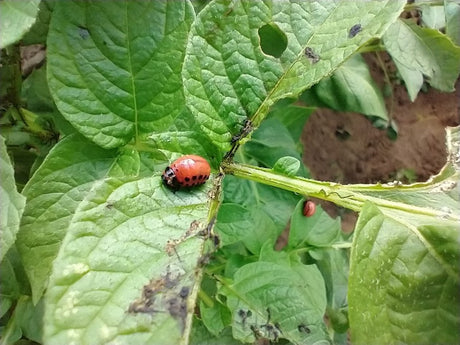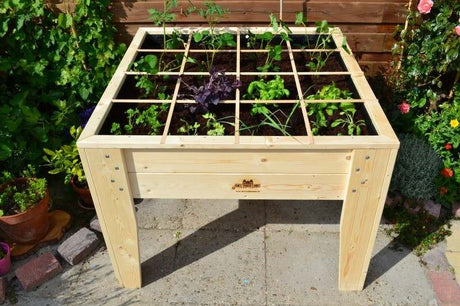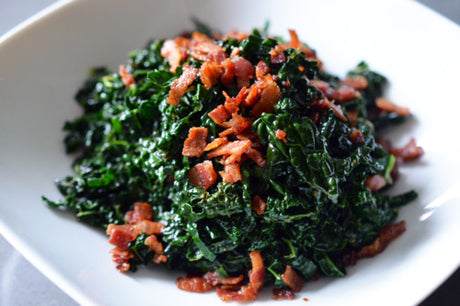Quick start ⚡ Quick Start Guide to Growing Garlic ⚡
🌱 Sowing & planting
- Sowing depth: 4 cm on clay soil, 10 cm on sandy soil
- Sowing distance: n/a (plant cloves loosely)
- Germination: n/a
- Planting distance: 15 cm between plants, 25 cm between rows
- Planting out as: garlic cloves are planted directly into the ground, with the point facing upwards
- Growth cycle: approx. 135 days
📅 Growing times throughout the year
- Autumn planting: Plant outdoors in October-mid-November; harvest in late June-mid-August.
- Spring planting: plant outdoors in late February-March; harvest in August. Prepare the cloves: buy a bulb of garlic, break it open into individual cloves and plant with the point facing up.
📘 Basic information
- Crop group: Root crop
- Crop family: Onion family
- Height: 30-60 cm
- Growth cycle: approx. 135 days
- Frost resistant: yes
- Root system: 30-45 cm
- Preferred soil: pH 6.0-7.0
- Fertilization: incorporate compost before cultivation
🌞💧 Pitch & water
Location: 🌞 lots of sun
Watering: 💧💧 water moderately
🤝 Good & Bad Neighbors
Good neighbors
- Fruit trees
- Nightshade family (tomatoes, peppers, paprika, eggplant, ...)
- Cabbage varieties
- Root
Bad neighbors
- Beans
- Peas
- Parsley
❗ Dangers & Concerns
- Sensitive to rust.
🧺 Harvesting & storing
When the foliage turns brown and flattens, the garlic is ready to harvest. Pull out the bulbs or use a pitchfork to gently loosen them.
Allow the harvested bulbs to dry thoroughly to preserve them. The exact drying or storage method is not specified in the information sheet.
🍽️ Nutritional value
Per 3 cloves of raw garlic (10 g):
- 13 kcal
- 0 g fat
- 3 g carbohydrates
- 1 g protein
- 0.2 g fiber
- 0.1 g sugar
- Vitamins: B6 and C
- Other: calcium, phosphorus, selenium and manganese
Table of Contents:
Growing garlic is an annual project for many gardeners. October or November is the ideal time to plant garlic , so you can harvest firm, fragrant bulbs in early summer. Those who prefer to start in the spring can also plant garlic in February, but autumn cultivation often has distinct advantages.
Growing garlic in your own garden is easy, fun, and delivers tons of flavor. Most garlic in the supermarket comes from countries like Spain or China, while growing it in the Netherlands or Belgium is perfectly feasible. With a few cloves and some attention to proper spacing and care, you can quickly enjoy your own harvest.
The beauty of homegrown garlic is that you always have a supply at home for your favorite dishes, from a quick stir-fry to a softly roasted bulb from the oven. This article explains everything you need to know about planting, caring for, and harvesting garlic , so you can build a successful crop step by step.
Below you will find a complete guide to growing your own garlic.
The benefits of garlic in the vegetable garden
Garlic is one of the easiest root vegetables to grow in the vegetable garden. It's winter-hardy, rarely bothered by insects or pests, and requires little maintenance. The reward comes early in summer: masses of fragrant , fresh garlic bulbs. Once the bulbs are properly dried, they can be stored and used in cooking for six months to a year.
Growing garlic is surprisingly easy. Each clove will develop into a robust bulb, provided it's planted and cared for properly. If you're looking to start a vegetable garden and don't yet know which vegetables to start with, garlic is a great choice. It's one of the most satisfying crops to grow.
Anyone who wants to start working on their vegetable garden in the fall can start planting garlic right away. There's no reason to wait until spring: the first crop can begin in October.
The difference between hardneck and softneck garlic
Anyone who grows garlic will quickly encounter the terms hardneck and softneck . These are the two main groups of garlic, and they differ in growth habit, flavor, and shelf life. Both varieties have their own advantages, depending on your gardening climate and whether you prioritize flavor or shelf life.
🌱 Hardneck garlic (Allium sativum var. ophioscorodon)
- Stem: Forms a sturdy, woody flower stem (also called a “scape”).
- Cloves: Fewer cloves (about 4 to 12), large and evenly arranged around the stem.
- Taste: Spicy, complex and aromatic – loved by gourmets.
- Cultivation: Grows best in cooler climates and needs cold to develop well.
- Storage: Shorter shelf life, usually three to five months.
🌿 Softneck garlic (Allium sativum var. sativum)
- Stem: Does not form a hard flower stem; the leaves remain soft and flexible.
- Toes: Several toes (sometimes up to twenty), of varying size, in several rings.
- Taste: Milder and less pronounced than hardneck.
- Cultivation: Suitable for warmer climates and easier to grow.
- Storage: Keeps well for a long time, often six to twelve months – ideal for braiding and storing.
In short: hardneck garlic is spicier and more visually appealing, but doesn't have a long shelf life. Softneck garlic has a milder flavor, is easier to store, and is the type you usually find in supermarkets.

Planting garlic: here's how to do it step by step
Want to grow garlic but don't know exactly how? In the video below , Ruud shows you step-by-step how to plant, care for, and harvest garlic – from planting the cloves to drying the bulbs. This article provides detailed instructions, including extra tips on the right planting time, ideal spacing, care, and storage methods.
When to plant garlic
The best time to plant garlic is in autumn or early winter . Garlic needs a period of cold to form firm bulbs, so it's important to plant before the first frost. Plant the cloves flat-side down, about 4 inches (10 centimeters) deep .
Planting too late can prevent the cloves from developing enough roots before winter, resulting in a smaller harvest. The soil should still be sufficiently warm when planting, which is often the case in autumn. This helps the young plants establish strong roots and start the winter strong.
A thin layer of mulch , such as straw, leaves or compost, will also help keep the soil moist and reduce weed pressure around the young garlic plants.
Because garlic takes about six to eight months to grow , it's planted in the fall for an early summer harvest. Planting in March wouldn't yield a harvest until September.





